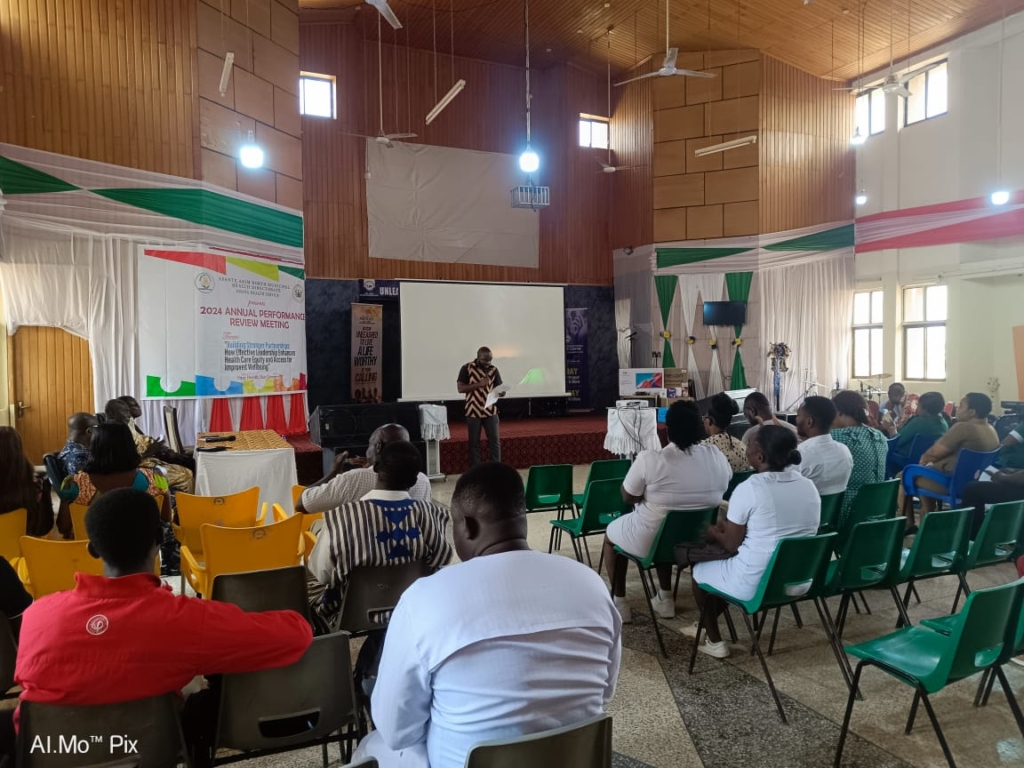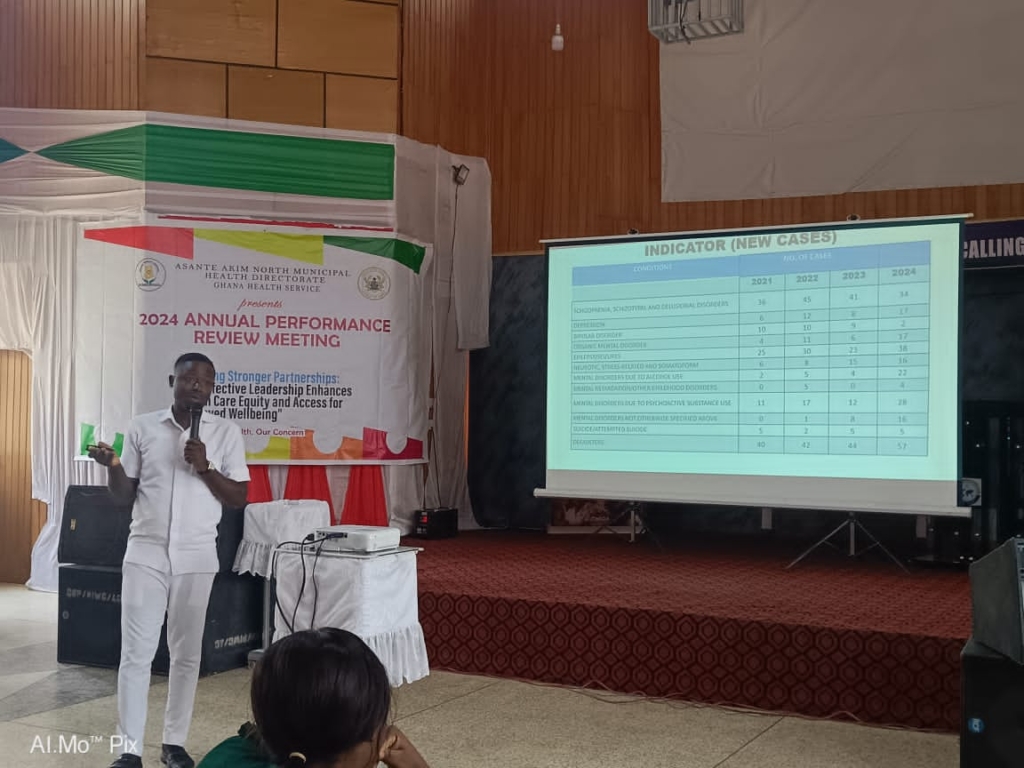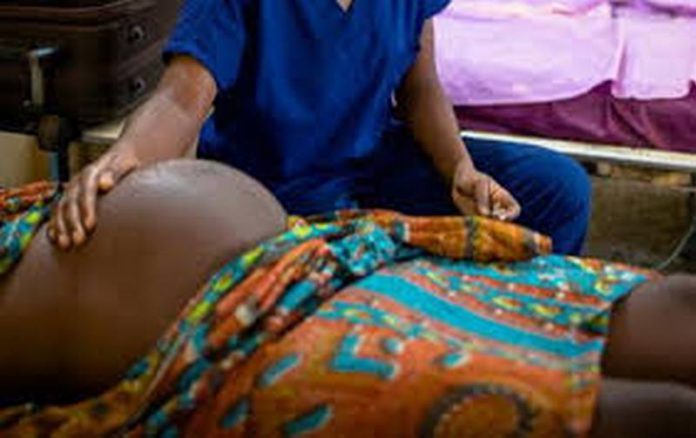The stillbirth rate in Asante Akim North District has increased to 14.3 per 1,000 live births in 2024, compared to 12.8 in 2023. This is higher than the target of 11.5.
The number of maternal deaths increased from 0/100000 live births (zero maternal death) in 2023 to 40/100000 live births (1 maternal death). Also, the number of newborns dying within their first month decreased from 17 per 1,000 in 2023 to 12 per 1,000 in 2024, though the target was seven.
Institutional all cause of death rate in health facilities slightly increased to 18.7% in 2024, compared to 17.5% in 2023, which is just above the target of 18%. However, fewer newborns received postnatal care within 48 hours after birth, dropping to 94.4%, above the target of 90%.

The gaps mentioned in the annual performance report refer to challenges that affect the quality and accuracy of healthcare data, how funds are managed, and how evenly healthcare services are distributed across different communities.
District Health Authorities say the Agogo Presbyterian Hospital plays a key role in the area, serving as a referral center for eight districts and municipalities including Asante Akim South and Central, Sekyere East, Ejisu Municipal, Bosome Freho, Kumawu, Sekyere Afram Plains and some from the Eastern Region. This means that patients from these areas who need more specialised or advanced care are sent to Agogo.
As a result, the hospital often handles more severe and complex cases, which can contribute to the higher rates of maternal deaths, stillbirths, or other health issues reflected in the statistics. Essentially, the hospital sees cases that are already in critical condition or that are referred too late, which can make the statistics appear worse than they might be in other hospitals with less complex cases.

“Most cases are referred late and sometimes in terrible conditions,” Ronald Welaga Miah, municipal director of health services, said.
“The figures and rates say it all. Targets are not met. There have been improvements due to interventions, but unfortunately, we are still not meeting the target.”
Pregnant women at risk are urged to prioritise visiting hospitals with the necessary expertise to manage their specific conditions promptly. “We urge at-risk pregnant or expectant mothers to prioritise visiting hospitals with the expertise to manage their respective conditions and to do so promptly,” Mr Miah stated.
Municipal health authorities have pledged to improve maternal and child health services by implementing strategies to reduce stillbirths, such as enhanced antenatal care and emergency obstetric services. They also plan to strengthen neonatal care, increase the number of postnatal visits, and expand access to skilled delivery services, particularly in underserved areas.
He also stated that the directorate would focus on strengthening the distribution of healthcare workers and ensuring equitable services by deploying more physicians and nurses to areas with low population equity scores. The directorate plans to use incentives such as housing, training opportunities, and salary adjustments to attract healthcare workers to underserved areas.
Other strategies are to regularly hold family meetings with referral facilities and districts, particularly to discuss maternal and newborn death audits, review recommendations, and plan the way forward.
However, there are still challenges with a shortage of technical and support staff, including Physician Assistants, Nutrition Officers, Field Technicians, and Laboratory Technicians, among others.

